PI3K/Akt Signaling Pathway

🧪 EIF4E-2775H
Source: E.coli
Species: Human
Tag:
Conjugation:
Protein Length: 1-217 aa
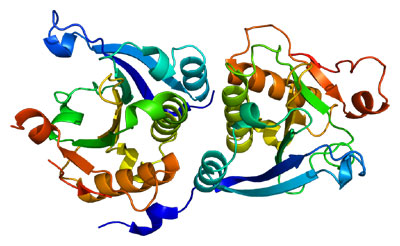

🧪 EGFR-30H
Source: HEK293
Species: Human
Tag: His
Conjugation:
Protein Length: 1-645 aa
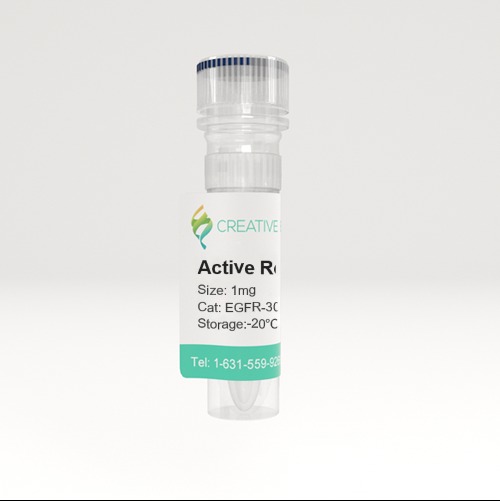
🧪 ERBB2-41H
Source: HEK293
Species: Human
Tag:
Conjugation:
Protein Length: Thr23-Thr652
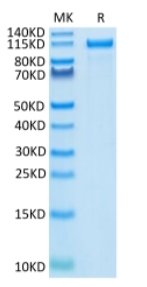
🧪 ERBB3-44H
Source: HEK293
Species: Human
Tag:
Conjugation:
Protein Length: 1-643 a.a.

🧪 AKT3-131H
Source: Insect Cells
Species: Human
Tag: GST
Conjugation:
Protein Length: 1-479 a.a.

🧪 ERBB4-288H
Source: Human Cells
Species: Human
Tag:
Conjugation:
Protein Length: 1-651 a.a.

🧪 FGFR1-138H
Source: Human Cells
Species: Human
Tag:
Conjugation:
Protein Length: 1-285 a.a.


🧪 EGFR-692H
Source: HEK293
Species: Human
Tag: Fc
Conjugation:
Protein Length: 1-640 a.a.

🧪 FGFR2-705H
Source: HEK293
Species: Human
Tag:
Conjugation:
Protein Length: Met1-Glu377
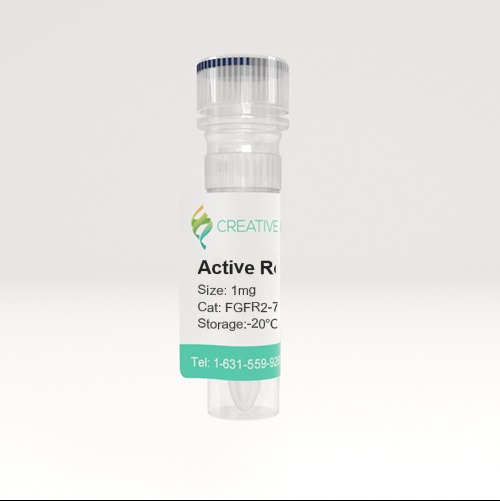
🧪 FGFR4-708H
Source: HEK293
Species: Human
Tag:
Conjugation:
Protein Length: Met1-Asp369
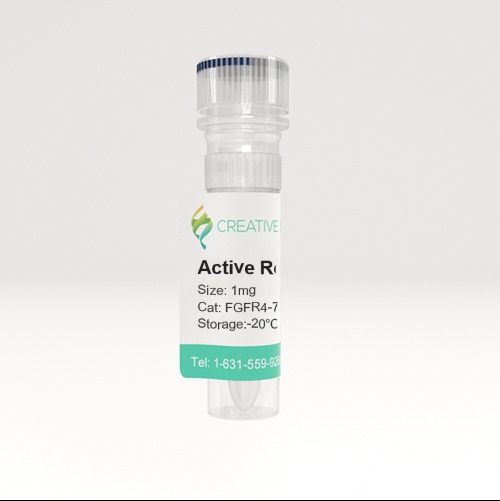
🧪 Fgfr4-709M
Source: HEK293
Species: Mouse
Tag:
Conjugation:
Protein Length: Leu17-Asp366
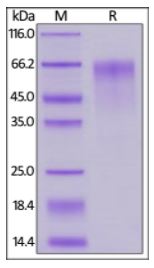
🧪 Fgfr4-710M
Source: HEK293
Species: Mouse
Tag:
Conjugation:
Protein Length: Met1-Asp366

🧪 NTRK1-156H
Source: HEK293
Species: Human
Tag:
Conjugation:
Protein Length: Met 1-Pro 382

🧪 NTRK2-157H
Source: HEK293
Species: Human
Tag:
Conjugation:
Protein Length: Cys32-His430
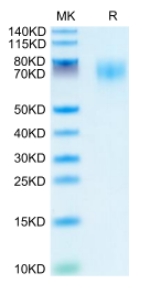

🧪 NTRK2-158H
Source: Human Cells
Species: Human
Tag:
Conjugation:
Protein Length: 1-430 a.a.

Background of PI3K/Akt Signaling Pathway
What is PI3K/Akt Signaling Pathway?
The PI3K/Akt pathway is an intracellular signal transduction pathway that promotes metabolism, proliferation, cell survival, growth, and angiogenesis in response to extracellular signals. This process is mediated by serine or threonine phosphorylation of a series of downstream substrates, and the key genes involved are phosphatidylinositol 3-kinase (PI3K) and Akt/ protein kinase b, so the pathway is directly named after these two genes.
The pathway is often initiated by the binding of extracellular signals, such as growth factors or hormones, to their respective cell surface receptors, including receptor tyrosine kinases (RTKs) and G-protein coupled receptors (GPCRs). This binding leads to the activation of phosphoinositide 3-kinase (PI3K), which generates phosphatidylinositol (3,4,5)-trisphosphate (PIP3) from phosphatidylinositol (4,5)-bisphosphate (PIP2).
Fully activated Akt phosphorylates a variety of downstream targets, leading to numerous cellular effects. For instance, Akt can inhibit the pro-apoptotic protein Bad, promote cell survival, stimulate protein synthesis through the regulation of the mammalian target of rapamycin (mTOR) pathway, and enhance glycogen synthesis and glucose uptake.
Critical Components and Functions

Fig1. Various classes of PI3K phosphorylate various phosphoinositides. (Cho-Won Kim, 2024)
PI3K
Activation of PI3K is a critical first step in the PI3K/Akt signaling pathway. It is usually activated by receptor tyrosine kinases (RTKs) or G protein-coupled receptors (GPCRs) on the cell surface. After binding to the corresponding ligand, these receptors activate their associated PI3K, which triggers a series of downstream events, including Akt activation and the production of multiple biological effects. In addition, PI3K is regulated by negative feedback regulators such as PTEN and SHIP, which can remove phosphate groups on PI(3,4,5)P3 or other phosphatidyl inositol phosphates, thereby inhibiting the PI3K signaling pathway.
Akt
AKT, also known as protein kinase B (PKB), is a serine/threonine specific protein kinase that plays a key role in a variety of cell growth processes, such as glucose metabolism, apoptosis, cell proliferation, transcription, and cell migration. AKT is an important effector molecule in the PI3K/Akt signaling pathway, whose activation is usually triggered by the second messenger PI(3,4,5)P3 produced by phosphatidylinositol 3-kinase (PI3K).
AKT activation involves two key phosphorylation steps, first phosphorylation by phosphoinosito-dependent kinase 1 (PDK1) at Thr308, followed by phosphorylation by mammalian target of rapamycin Complex 2 (mTORC2) at Ser473, which leads to complete AKT activation. Activated AKT promotes cell proliferation, metabolism, and survival by phosphorylating a variety of downstream substrates, such as glycogen synthase kinase-3β (GSK3β), forks kinase transcription factor (FOXO), and tuberous sclerosis Complex 2 (TSC2).

Fig2. The domain structure of the protein kinase B (PKB)/Akt family. (D P Brazil, 2001)
Physiological Roles of PI3K/Akt Signaling Pathway
The PI3K/Akt signaling pathway plays a crucial role in a variety of physiological processes within the body, contributing to the regulation of cell survival, growth, metabolism, and other essential functions. Here are some of the key physiological roles of the PI3K/Akt signaling pathway:
Cell Survival and Apoptosis Inhibition: Akt, once activated by PI3K through the production of PIP3, promotes cell survival by inhibiting pro-apoptotic proteins such as Bad and Bax, and by activating anti-apoptotic proteins like Bcl-2 and Mcl-1. This helps maintain the balance between cell survival and cell death, which is critical for tissue homeostasis and development.
Cell Cycle Regulation: The PI3K/Akt pathway is involved in regulating the cell cycle, particularly at the G1/S transition. Akt can phosphorylate and inactivate cell cycle inhibitors like p27^Kip1 and p21^Cip1, allowing cells to progress through the cell cycle and proliferate.
Glucose Metabolism: Akt plays a significant role in glucose homeostasis by stimulating glucose uptake in muscle and adipose tissue. It does this by promoting the translocation of glucose transporter 4 (GLUT4) to the plasma membrane, which facilitates glucose entry into cells.
Protein Synthesis: The pathway is essential for the regulation of protein synthesis. Akt activates the mechanistic target of rapamycin (mTOR) complex 1 (mTORC1), which in turn stimulates the translation of mRNA into proteins, thereby promoting cell growth and anabolic processes.
Lipid Metabolism: Akt can influence lipid metabolism by activating enzymes involved in fatty acid synthesis and by inhibiting enzymes that promote fatty acid oxidation. This regulation helps maintain energy balance within the cell and contributes to the overall metabolic health of the organism.
Insulin Signaling: The PI3K/Akt pathway is a central component of insulin signaling. It mediates the metabolic actions of insulin, including the stimulation of glucose uptake, glycogen synthesis, and the inhibition of gluconeogenesis. Dysregulation of this pathway can lead to insulin resistance and type 2 diabetes.
Cardiac Function and Repair: Akt has been implicated in the heart's response to stress, such as ischemia, by promoting cardiomyocyte survival and potentially playing a role in the repair and regeneration of heart tissue following injury.
PI3K/Akt Signaling Pathway Related Diseases
The PI3K/Akt signaling pathway is implicated in a variety of diseases due to its central role in regulating cell survival, metabolism, and proliferation. Here are some of the key diseases associated with the PI3K/Akt pathway, with references to the provided documents:
Cancer: Aberrant activation of the PI3K/Akt pathway is frequently observed in various types of cancer. The pathway's role in promoting cell survival and proliferation contributes to tumor growth and resistance to apoptosis, making it a target for cancer therapy.
Type 2 Diabetes (T2DM): The PI3K/Akt pathway plays a crucial role in glucose homeostasis and insulin signaling. Disruptions in this pathway can lead to insulin resistance, a hallmark of T2DM, and can affect glucose uptake and metabolism in muscle and adipose tissue.
Cardiovascular Diseases: The PI3K/Akt pathway is involved in the regulation of cardiovascular function, and its dysregulation has been linked to the development of atherosclerosis, heart failure, and other cardiovascular conditions.
Neurological Disorders: The pathway is also associated with several neurological disorders, including Alzheimer's disease and Parkinson's disease. It is involved in neuronal survival and synaptic plasticity, and its dysregulation can contribute to neurodegenerative processes.
Inflammatory Diseases: The PI3K/Akt pathway has been implicated in inflammation-related diseases, where it can modulate inflammatory responses and contribute to the pathogenesis of conditions such as chronic obstructive pulmonary disease (COPD).
Obesity: The pathway's role in regulating metabolism and energy balance makes it relevant to the development of obesity. It can influence lipid metabolism and adipogenesis, and its dysregulation may contribute to obesity-related metabolic complications.

Fig3. Combined PI3K and MeK pathway inhibition. (Jeffrey A Engelman, 2009)
Case Study
Case Study 1: Active Recombinant Human MAP2K1
Mitogen-activated protein kinase kinase 1 (MAP2K1/MEK1) as well as Yes-associated protein (YAP), the downstream effector of Hippo signaling pathway, is linked to hepatocarcinogenesis. However, little is known about whether and how MEK1 interacts with YAP. In this study, the researchers find that MEK1-YAP interaction is critical for liver cancer cell proliferation and maintenance of transformed phenotypes both in vitro and in vivo. Moreover, MEK1 and YAP proteins are closely correlated in human liver cancer samples. Mechanistically, inhibition of MEK1 by both PD98059 and U0126 as well as RNAi reduces beta-transducin repeat containing E3 ubiquitin protein ligase (BTRC), which acts as a potential endogenous YAP protector.

Fig1. RWestern blotting of co-immunoprecipitations (IP) of YAP and MEK1. (Lanlan Li, 2013)
Case Study 2: Recombinant Rat PI3K protein
Ischemia/reperfusion injury (IRI) of the heart involves the activation of oxidative and proapoptotic pathways. Simultaneously Klotho protein presents anti-aging, antiapoptotic and antioxidative properties. Therefore, this study aimed to evaluate the effect of Klotho protein on oxidative stress in hearts subjected to IRI. Isolated rat hearts perfused with the Langendorff method were subjected to ischemia, followed by reperfusion, in the presence or absence of recombinant rat Klotho protein. The factors involved in the activation of insulin-like growth factor receptor (IGF1R)/phosphoinositide-3-kinase (PI3K)/protein kinase B (AKT) signalling pathway were evaluated. IRI caused activation of the IGF1R (p = 0.0122)/PI3K (p = 0.0022) signalling, as compared to the aerobic control group. Infusion supply of Klotho protein during IRI significantly reduced the level of phospho-IGF1R (p = 0.0436), PI3K (p = 0.0218) and phospho-AKT (p = 0.0020). Klotho contributed to the protection of the heart against IRI and oxidative stress via inhibition of the IGF1R/PI3K/AKT pathway, thus can be recognized as a novel cardiopreventive/cardioprotective agent.

Fig2. PI3K level in the heart tissue. (Agnieszka Olejnik, 2023)
Case Study 3: Recombinant Human AKT protein
Chemoresistance is associated with tumor relapse and unfavorable prognosis. Multiple mechanisms underlying chemoresistance have been elucidated, including stemness and DNA damage repair. Here, the involvement of the WNT receptor, FZD5, in ovarian cancer (OC) chemoresistance was investigated. OC cells were analyzed using in vitro techniques including cell transfection, western blot, immunofluorescence and phalloidin staining, CCK8 assay, colony formation, flowcytometry, real-time PCR, and tumorisphere formation. Functional studies in OC cells showed that FZD5 contributes to epithelial phenotype maintenance, growth, stemness, HR repair, and chemoresistance. Mechanistically, FZD5 modulates the expression of ALDH1A1, a functional marker for cancer stem-like cells, in a β-catenin-dependent manner. ALDH1A1 activates Akt signaling, further upregulating RAD51 and BRCA1, to promote HR repair.

Fig3. pAkt, Akt, pJnk, Jnk, pErk, and Erk expression in OC cells detected by western blot. (Yuhong Xia, 2024)
Related Products
Focusing on the life sciences sector, Creative BioMart offers a range of high-quality products related to the PI3K/Akt signaling pathway. This signaling pathway plays a central role in key biological processes such as cell growth, metabolism, survival and proliferation, so our products are of great value for the study of cell biology, disease mechanisms and drug development. Please contact us if you have any need.


